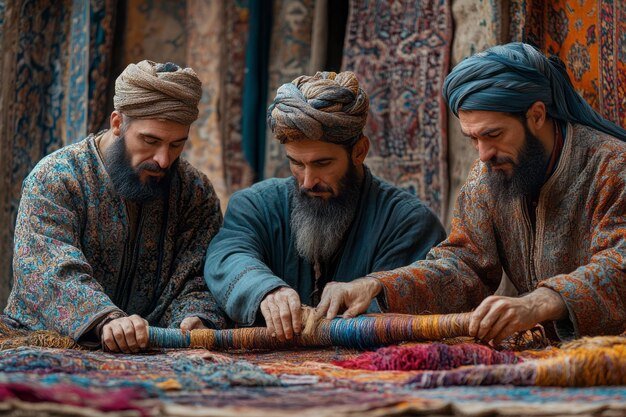
Käätänäj
Käätänäj is more than just a concept; it’s a living expression of history, culture, and community. Rooted in tradition, it carries with it centuries of wisdom and meaning. As the world changes, so does Käätänäj, adapting while still maintaining its core values. From its ancient origins to its presence in modern society, Käätänäj continues to impact lives across generations. This article explores its evolution, cultural significance, and modern relevance, offering insights into how Käätänäj connects people globally and shapes the future.
The Origins and Historical Context of Käätänäj
Käätänäj traces its roots back to ancient times, evolving from the early practices of indigenous communities. It began as a form of expression closely tied to everyday life, deeply woven into the social and cultural fabric. Its origins are thought to be linked to traditional storytelling, craftsmanship, and the natural environment, where each element had a unique role in community life.
Over the centuries, Käätänäj grew in prominence, serving not just as a medium for communication, but as a symbol of identity. It reflected the values, beliefs, and ways of life of its practitioners. As society advanced, so did the methods of passing Käätänäj from one generation to the next. Elders played a significant part in preserving its essence, using stories, rituals, and hands-on learning to teach younger generations about their heritage.
Historical records show that Käätänäj adapted to the changing world, influenced by various cultural interactions and shifts in societal structures. Even as times changed, its foundational principles remained intact, keeping it relevant and cherished among communities.
Today, understanding Käätänäj’s historical journey provides valuable insight into how it shaped the identity of its people and why it continues to be celebrated. Its deep connection to cultural traditions and values gives it a timeless quality, allowing it to stay resilient even in a rapidly evolving world.
Cultural and Philosophical Importance of Käätänäj
Käätänäj is not just a cultural artifact; it represents a way of life deeply rooted in philosophical ideas. At its core, Käätänäj promotes mindfulness and a deliberate approach to the world around us. It encourages a connection with the environment, where every action, craft, or tradition holds significance. This attention to detail reflects a broader worldview, one that values sustainability, patience, and a deep respect for craftsmanship.

Culturally, Käätänäj plays a key role in preserving identity. It reflects the traditions, values, and historical experiences of the people who practice it. Each element of Käätänäj, whether through storytelling, art, or community rituals, serves as a reminder of the past, fostering a sense of belonging and continuity across generations. It acts as a bridge, linking individuals to their ancestors and to one another, keeping the cultural narrative alive.
Philosophically, Käätänäj ties into the concept of slow living, a movement that prioritizes quality, presence, and simplicity over speed and efficiency. It advocates for a life lived in harmony with nature, where processes like creating, growing, or even communicating are treated with care and intention. This approach contrasts with the fast-paced, disposable culture of modern times, offering an alternative that values sustainability and thoughtful engagement with the world.
In modern life, Käätänäj’s philosophy is finding renewed relevance. People are increasingly drawn to its principles, seeking ways to reconnect with a slower, more intentional existence. Through its cultural and philosophical teachings, Käätänäj serves as both a reminder and a guide for a more balanced way of living.
Käätänäj in Modern Society
As society evolves, so has Käätänäj. Once primarily rooted in tradition, it has adapted to fit the changing needs of today’s world while maintaining its core values. In many ways, Käätänäj is a reflection of a society that is looking to reconnect with its roots, particularly in areas like craftsmanship, mindfulness, and sustainability.
In modern contexts, Käätänäj has found new life in various forms. Artists and designers often incorporate its traditional elements into contemporary creations, blending old techniques with modern aesthetics. This resurgence of interest in handcrafted, artisanal products speaks to a desire for authenticity in a world dominated by mass production. Käätänäj’s emphasis on slow, intentional processes resonates with individuals seeking meaningful alternatives to the fast-paced consumer culture.
Technology has also played a role in the spread of Käätänäj beyond its traditional boundaries. Online communities have grown around it, allowing people across the world to learn, share, and appreciate its principles. Through these digital platforms, Käätänäj has found a place in the globalized world, where it can be both celebrated and preserved.
As people face increasing pressure from modern lifestyles, Käätänäj offers a reminder of the value of balance. Its principles encourage a more mindful way of living, where attention to detail and a slower pace are celebrated rather than rushed. This makes Käätänäj particularly relevant in today’s conversations about sustainable living and mental well-being. By promoting a lifestyle that emphasizes quality over quantity, Käätänäj provides a blueprint for how to live in harmony with both nature and society.
In many ways, Käätänäj has become more than a cultural practice—it’s a philosophy that continues to find relevance in modern life, offering solutions to the challenges of a rapidly changing world. Its ability to adapt while staying true to its origins is what makes it so enduring.
Käätänäj as a Global Connector
Käätänäj has become a bridge that connects people across cultures and borders. Its principles and practices, once confined to specific regions, now resonate with individuals worldwide. One of the key reasons Käätänäj has gained this global appeal is its universal themes—mindfulness, craftsmanship, and sustainability. These values strike a chord with those seeking deeper connections in a fragmented world.
The spread of Käätänäj across different countries is largely due to the rise of digital platforms that facilitate cultural exchange. Social media, online forums, and virtual workshops have allowed people to share Käätänäj’s teachings with a global audience, making it accessible to anyone interested in learning. This cross-cultural interaction enriches the practice itself, as individuals from diverse backgrounds add their unique interpretations and applications, expanding Käätänäj’s influence.
The adaptability of Käätänäj also plays a significant role in its global reach. While its roots remain grounded in tradition, the practice has evolved to embrace contemporary expressions in art, education, and even business. This flexibility allows it to resonate with people in different walks of life, whether they are artisans preserving traditional crafts or entrepreneurs incorporating Käätänäj’s values into their business models.
What makes Käätänäj particularly powerful as a connector is its ability to foster a sense of community. People who engage with Käätänäj often find themselves part of a global network of like-minded individuals, all working toward similar goals of sustainability, creativity, and intentional living. These connections help break down barriers, encouraging collaboration and mutual understanding across cultures.
In today’s interconnected world, Käätänäj serves as more than just a cultural practice—it has become a way to bring people together. By focusing on shared values and meaningful experiences, Käätänäj offers a platform for global unity in an increasingly complex world.
Applications of Käätänäj in Technology and Business
Käätänäj has evolved beyond its traditional roots and found its way into various modern applications, particularly in technology and business. The underlying principles of mindfulness, craftsmanship, and sustainability have proven valuable in these fields, offering fresh approaches to problem-solving and innovation.
In the world of technology, Käätänäj inspires a shift towards more thoughtful and sustainable development. Many tech companies now prioritize efficiency without sacrificing quality, seeking to create products that not only meet consumer needs but also align with eco-friendly practices. Käätänäj’s influence can be seen in the movement toward reducing waste in product design, optimizing resources, and creating solutions that last longer, thus promoting sustainability within technological advancements.
Business sectors have also adopted Käätänäj’s approach, particularly in areas like product development and customer relations. Companies increasingly focus on quality and personalization, echoing the Käätänäj belief in mindful creation. This shift is evident in industries such as fashion, where sustainable materials and craftsmanship are becoming the norm, as well as in the food industry, where ethical sourcing and thoughtful production processes are gaining traction.
Incorporating Käätänäj into business models goes beyond just products—it’s about creating an environment where long-term thinking and responsible decision-making take precedence. Businesses that align themselves with Käätänäj’s values tend to build stronger relationships with consumers, who appreciate the attention to sustainability and authenticity.

Käätänäj’s influence is also present in the growing trend of conscious leadership. Leaders inspired by Käätänäj principles often focus on the well-being of their employees, fostering a work environment that values creativity, collaboration, and mindfulness. This approach not only boosts morale but also drives innovation, as employees feel more engaged and connected to their work.
The integration of Käätänäj into technology and business reflects a broader shift towards intentional, responsible growth. By embracing its core values, industries can achieve progress while remaining mindful of their impact on both people and the environment.
Environmental and Sustainability Aspects of Käätänäj
Käätänäj has long been connected to nature, with many of its practices rooted in a deep respect for the environment. Its emphasis on sustainability is not a recent trend but a way of life passed down through generations. This focus on ecological balance remains relevant today, as sustainability becomes a critical consideration across the globe.
At its core, Käätänäj promotes the idea of taking only what is needed from the environment, avoiding excess and waste. This principle applies to various aspects of life, from agriculture to craftsmanship. Traditional Käätänäj methods involve using natural, locally sourced materials in a way that minimizes impact on the land. These practices not only preserve the environment but also foster a stronger connection between people and the natural world around them.
As modern society grapples with environmental challenges, Käätänäj provides a timeless example of how to live in harmony with nature. Its emphasis on careful resource management and respect for the ecosystem offers valuable lessons for industries looking to adopt more sustainable practices. In areas like construction, fashion, and design, the Käätänäj approach encourages the use of renewable materials, recycling, and reducing the carbon footprint of production processes.
Käätänäj also plays a role in educating future generations about sustainability. By preserving traditional knowledge and practices, communities can pass on valuable lessons about environmental stewardship. This helps ensure that the next generation understands the importance of protecting natural resources and living sustainably.
In the context of modern sustainability movements, Käätänäj serves as both an inspiration and a model. Its practices demonstrate that sustainability is not just a goal but a way of living that respects the balance between human needs and the environment. As industries and individuals alike seek to reduce their environmental impact, Käätänäj offers a time-tested blueprint for achieving that balance.
Challenges in Preserving Käätänäj
While Käätänäj holds deep cultural, environmental, and philosophical significance, it faces various challenges in preservation. As modern lifestyles continue to evolve rapidly, maintaining traditional practices like Käätänäj can become increasingly difficult. One of the primary concerns is the diminishing number of people who actively practice and pass down the knowledge, particularly as younger generations are drawn toward more globalized, technology-driven cultures.
Urbanization is another factor contributing to the decline of traditional practices. As communities shift from rural environments, where Käätänäj is most deeply rooted, to urban centers, the connection to nature and slower, intentional living weakens. The busy, fast-paced nature of city life often leaves little room for preserving and practicing traditions that require time, attention, and deep engagement with one’s surroundings.
The impact of globalization also presents a challenge. While globalization fosters the exchange of ideas and cultures, it can sometimes overshadow local practices, pushing them to the fringes of society. As global trends and commercial interests dominate, traditional practices like Käätänäj risk being seen as outdated or irrelevant, especially if they do not align with mainstream consumer culture.
Another significant challenge is the loss of traditional knowledge bearers, particularly elders, who play a crucial role in teaching and preserving Käätänäj. With fewer elders in communities able to pass down these traditions, much of the knowledge is at risk of being lost forever. Efforts to document and preserve this wisdom are often hindered by limited resources or lack of awareness about the importance of these practices.
Despite these challenges, efforts are being made to preserve Käätänäj. Communities are working to keep the practice alive by integrating it into educational programs and community activities. Additionally, collaborations with environmental and cultural preservation organizations are helping to raise awareness about Käätänäj’s value. By supporting these efforts, there is hope that Käätänäj will not only survive but continue to thrive in the modern world.
Future of Käätänäj
The future of Käätänäj holds both opportunities and challenges as it continues to adapt in a rapidly changing world. One of the key opportunities lies in its ability to connect with modern movements centered on sustainability, mindfulness, and craftsmanship. As global conversations around climate change, ethical consumption, and well-being grow louder, Käätänäj’s values align naturally with these priorities. Its emphasis on mindful production, minimal environmental impact, and preserving traditions resonates with people looking for alternatives to fast-paced consumerism.
Digital platforms offer another promising path for Käätänäj’s survival and growth. As technology evolves, so do the ways in which people learn and share knowledge. Virtual communities dedicated to Käätänäj, online courses, and digital libraries can serve as powerful tools for preserving and spreading its teachings. By making Käätänäj more accessible to a global audience, it has the potential to transcend geographic boundaries, allowing individuals from all walks of life to engage with its principles.
However, the future of Käätänäj will depend on how effectively it can remain relevant in the eyes of younger generations. To ensure its continued practice, efforts need to focus on integrating Käätänäj into education systems, where children and young adults can be introduced to its values. This could involve hands-on workshops, community-based learning, or digital education programs that teach Käätänäj not just as a craft, but as a philosophy that promotes a more balanced way of living.

Collaborations with modern industries also provide a potential path forward. Sectors like fashion, design, and architecture are increasingly exploring ways to incorporate traditional methods into contemporary projects. Käätänäj, with its focus on sustainability and quality craftsmanship, offers inspiration for these industries to produce more thoughtful and environmentally friendly products.
Despite the promising avenues for growth, the future of Käätänäj will still depend heavily on the commitment of its practitioners. Preserving its essence while allowing it to evolve will be key. By maintaining its core principles and integrating them into the fabric of modern life, Käätänäj can not only survive but continue to inspire generations to come.
Conclusion
Käätänäj represents a timeless connection between tradition and modern life. Its ability to adapt while preserving its core values has allowed it to remain relevant across generations. From its roots in craftsmanship and storytelling to its influence in modern industries and environmental movements, Käätänäj continues to inspire mindful living and sustainability. As the world evolves, Käätänäj provides a meaningful reminder of the value of intentionality, balance, and respect for the environment. By nurturing its principles and embracing its potential, Käätänäj can continue to enrich lives and bridge cultures for years to come.
FAQs
1. What is Käätänäj?
Käätänäj is a cultural practice rooted in tradition, craftsmanship, and mindfulness. It encompasses various forms of expression, including art, storytelling, and sustainable living, reflecting values that promote balance and a deep connection to nature and community.
2. How is Käätänäj relevant in modern times?
Käätänäj continues to find relevance today through its focus on sustainability, quality craftsmanship, and intentional living. It has inspired movements in industries like fashion, technology, and design that prioritize mindful production and eco-friendly practices.
3. What challenges does Käätänäj face in today’s world?
Käätänäj faces challenges such as globalization, urbanization, and the decline of traditional knowledge bearers. These factors can lead to a disconnect from its roots, especially as younger generations are more influenced by fast-paced, globalized cultures.
4. How can Käätänäj contribute to sustainability efforts?
Käätänäj promotes the use of natural, locally sourced materials and encourages minimizing waste. Its principles align with sustainable living practices, making it a valuable guide for industries and individuals focused on reducing environmental impact.
5. How is Käätänäj being preserved for future generations?
Efforts to preserve Käätänäj include integrating it into education systems, community workshops, and digital platforms that share its values globally. These initiatives help maintain its practices and teachings, ensuring that Käätänäj continues to thrive in the modern world.




